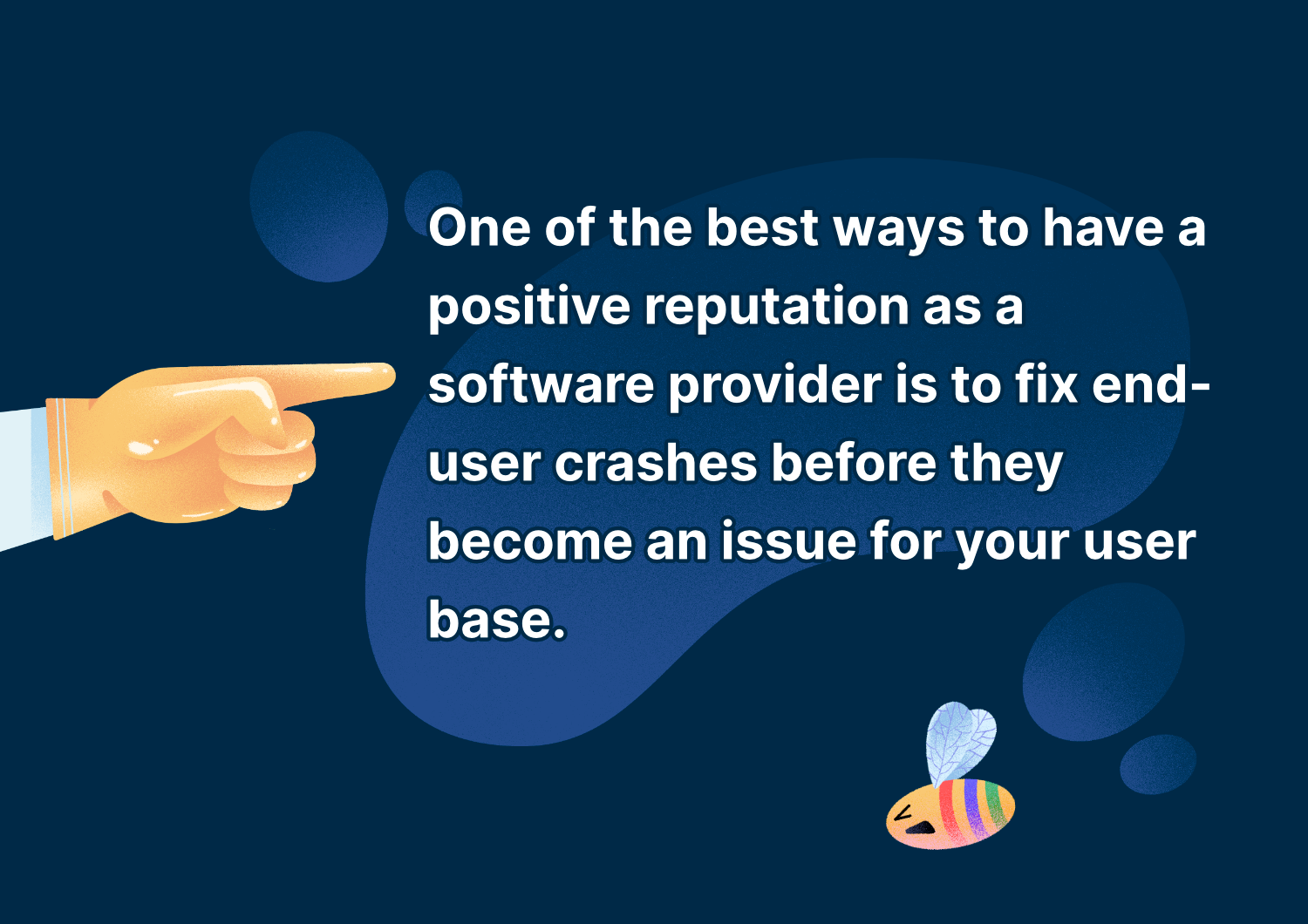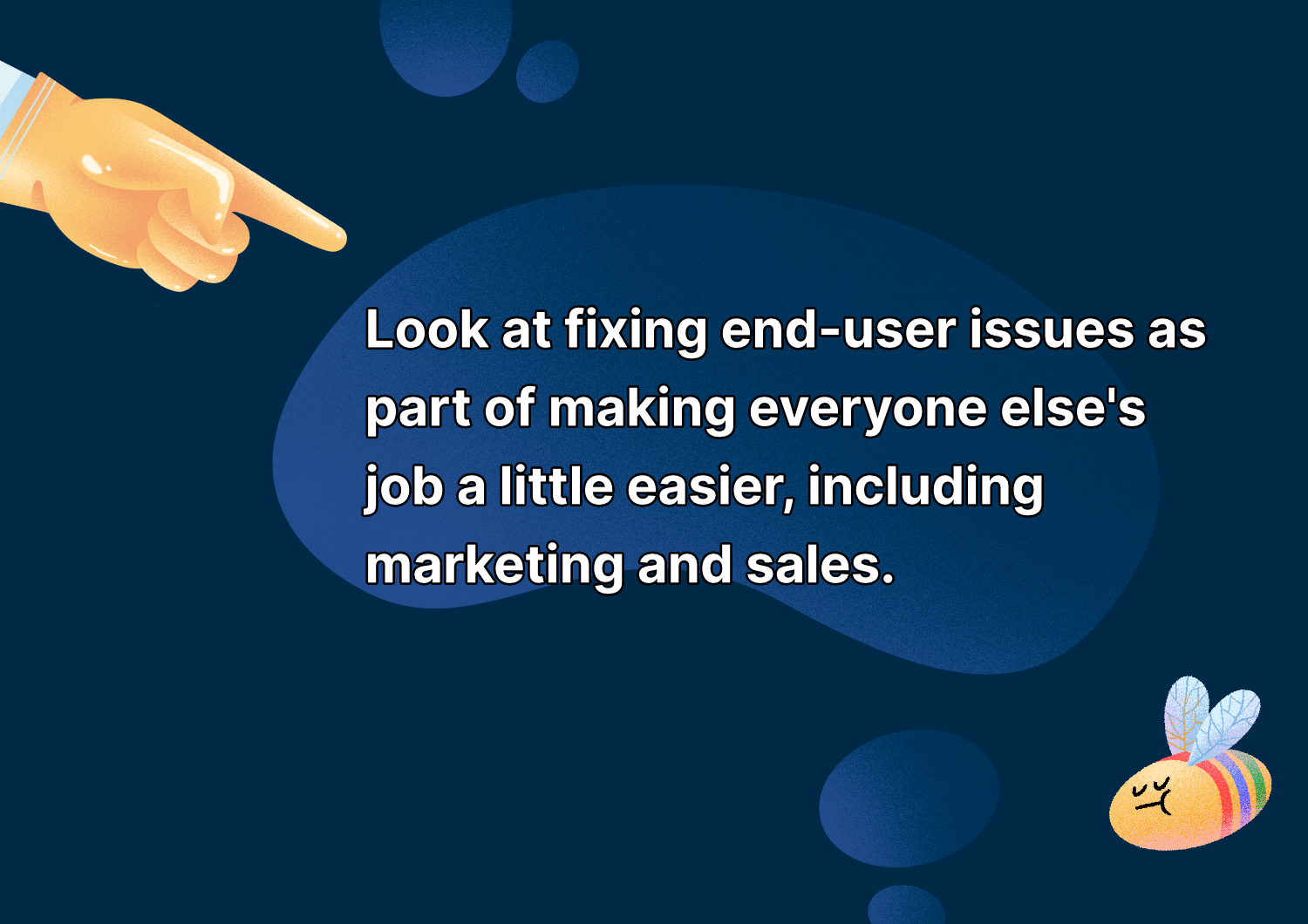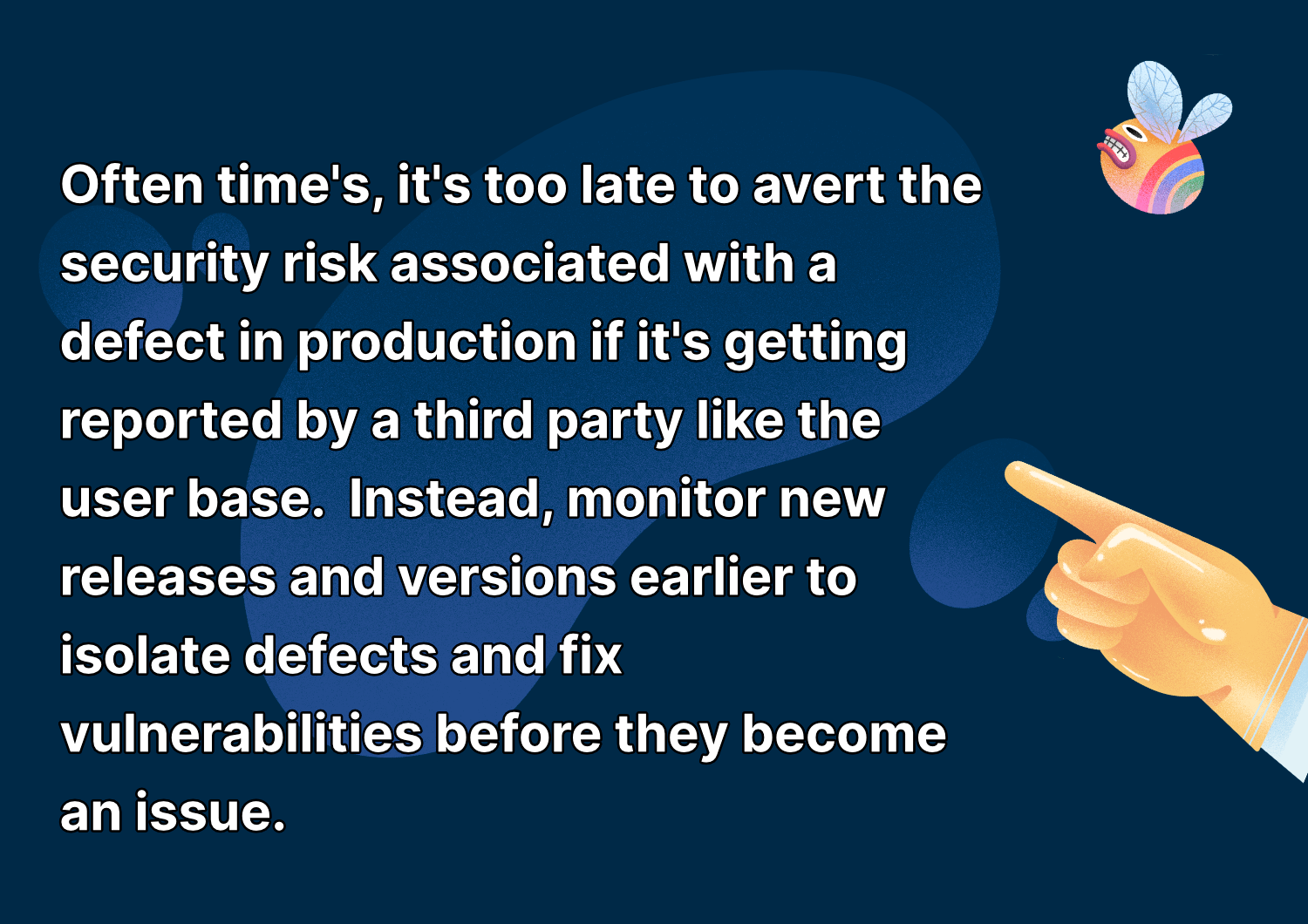How Uncaught Crashes Can Damage Your Application's Reputation, Revenue, and more

How Uncaught Crashes Can Damage Your Application's Reputation, Revenue, and more
At BugSplat, we have a unique view of how uncaught crashes can impact individual teams (and entire companies) through our work building tools to find and fix bugs in live applications.
We've seen firsthand the difference it can make when teams have a workflow for reporting every defect that makes it into production and when they don't.
Teams without a way of automatically capturing defects in production often deal with similar issues that stem from a lack of real-time, actionable insights into the issues affecting their end-users.
Unmanaged issues have costs and consequences that extend well beyond a single defect or end-user. Uncaught crashes tend to be the center ripple of a much larger wave that affects everything from an application's reputation to day-to-day developer productivity and ultimately the company's bottom line.
Reputation damage
Software development teams have tight deadlines, users clamoring for new features, and a list of bugs that need to be fixed. These factors (and about a billion more) make implementing any new tool, process, or workflow challenging to sell to busy developers. However, choosing to release versions of an application without a way to catch and address user crashes and errors can have severe consequences for a team, company, and/or application's reputation.
Applications that don't automatically capture end-user defects leave themselves open to two types of reputation damage.
The first type of reputation damage is at a personal, end-user level: why would an individual choose to continue using any application with unaddressed bugs when they can easily switch to a similar application that doesn't have issues?
Even for the biggest and most well-regarded teams and applications, the stakes are high. A study by QualiTest found that 88% of users would abandon an app if they encountered bugs consistently and that 51% of users were likely to stop using an application entirely if they experienced one or more bugs daily. It only takes a small amount of friction for an individual user to change their mind about an application for the worse.
Another type of reputational damage occurs when users share their poor experience with an application with their friends, online, or on social media.. This type of damage tends to snowball as users are more likely to share their own negative experiences when they see that opinion already being shared online first.
Negative conversations about your product have a long-tail negative effect, as they live on Twitter, Reddit, StackOverflow, or community forums longer than a single buggy version of your application. Social media posts can show up in search results even after the offending issues have been fixed.
Suggestion: One of the best ways to have a positive reputation as a software provider is to fix end-user crashes before they become an issue for your user base.

Loss of revenue
A direct and understandable consequence of an application's damaged reputation stemming from uncaught crashes and errors in an application is the loss of revenue.
This makes sense because - if fewer users of an application hold it in high regard - they'll be less likely to buy the product in the future.
Additionally, the loss of revenue for an application strengthens the competition by providing an opening for end-users to try out alternative products. Most applications have many alternatives, and end-user switching costs are generally low.
Without significant barriers keeping users locked into their use patterns with an application, uncaught crashes are one of the leading reasons users will choose to jump ship and change to the competition.
User churn causes instability and creates problems at the business level, making projecting revenue and growth difficult.
Suggestion: Growing companies in competitive markets should see end-user stability as a competitive advantage to shore up current revenue and protect against user churn.

More expensive customer acquisition
Acquiring new users is difficult and expensive, even for the best-run companies. One of the most efficient and cheapest ways to win customers isn't via advertising or marketing but through positive recommendations given organically from an application's users.
Word-of-mouth advertising is powerful and cost-effective. According to Nielsen, it is the preferred form of advertising for ~92% of consumers.
And that makes sense.
Everyone trusts the people they know more than any advertisements or blog posts, and it takes a level of belief in a product or service to recommend it to a friend or colleague. Putting your opinion behind an endorsement - even an off-hand one made to a friend - means you've reached a certain plateau of trust with that application.
If your application is experiencing frequent uncaught and unaddressed crashes, it's less likely that a customer will refer it positively to a friend.
Constant crashes and unaddressed issues corrode your users' beliefs and lead to conversations like the one below that I asked an AI to write.
Friend: Hey, have you heard of this new app? It's supposed to be really good!
You: Oh yeah, I've tried it. But honestly, it's pretty buggy. I've had a lot of issues with it crashing and freezing up.
Friend: Really? That's too bad. I was hoping it would be a good replacement for the app I'm currently using.
You: Yeah, I wouldn't recommend it. I've heard from other people that they've had similar issues with it. Honestly, I think you're better off sticking with what you're using now.
Friend: Thanks for the heads up. I appreciate it. I definitely don't want to deal with a buggy app.
You: No problem. I've been burned by buggy apps before, and it's not worth the hassle.
The conversation above clearly shows that by leaving uncaught crashes unaddressed, companies lose out on one of their most effective and cost-efficient means of advertising their application.
To offset organic growth from word-of-mouth recommendations, companies need to spend more time and money on advertising and marketing, which increases the cost of customer acquisition and limits the resources they have to work on other important things.
Suggestion: Look at fixing end-user issues as part of making everyone else's job a little easier, including marketing and sales.

Increased support costs
When an application has uncaught crashes and errors, it leads to support costs expanding and being pushed downstream. When an application crashes or has errors that go unnoticed, it can lead to an increase in support costs, which can be a real bummer. These costs are then passed down the line, making it harder to identify issues and fix them in a timely manner. This results in something called technical debt, which is basically like a loan with a variable interest rate that you have to keep paying until it's finally paid off. And the more issues that pop up, the more resources you need to stabilize your application, making it more expensive over time.
If you don't address these issues, you'll end up with a lot of user complaints and support tickets, which can be a real headache. You'll need to spend more time, energy, and resources responding to them, which means less time for new development or even hiring new staff to deal with the increased support load.
However, if you have a system in place that lets you find and fix live crashes, your development team can quickly evaluate all the issues and prioritize the most critical ones. This way, they can respond to bugs before users even have a chance to report them. Tools like BugSplat let teams associate customer-reported issues with the underlying defect in their application's source code, giving them up-to-date data on how often the issue has occurred and how many users were affected.
By automating the defect association process, you can eliminate a whole step in the support process. This gives your team access to a full history of your application's current stability and lets developers examine underlying defects behind user complaints quickly and efficiently. Not only does this save time, but it also helps to reduce technical debt, making it easier to maintain your application over time.
Suggestion: Take an active instead of a reactive approach to fixing bugs, as pushing off implementing a workflow to find, triage, and fix live bugs might save time and effort in the short term, but it creates more costly work down the road.

Security risks
Uncaught crashes can be clues that reveal security risks in an application. Waiting for users or your team to catch the underlying defect can leave an application or the application's users vulnerable to attack or compromise. Ignoring security bugs can put users, their data, and your company at risk.
An early warning system for critical security defects allows issues to be identified and swiftly fixed and is one of the best ways a team can guard against serious risks of this nature.
By monitoring crash and error data directly after each new product or version launch, teams can quickly and easily identify security risks posed by crash defects. Once identified, issues can be dealt with swiftly, averting the associated risk posed to the application and its users.
Suggestion: Often time's, it's too late to avert the security risk associated with a defect in production if it's getting reported by a third party like the userbase. Instead, monitor new releases and versions earlier to isolate defects and fix vulnerabilities before they become an issue.

Conclusion:
When end-users experience crashes or errors, they become frustrated with the software and the company behind it. Over time, unmanaged issues erode users' trust and loyalty, decreasing engagement and tanking revenue. Over time unresolved defects, increase support costs and even pose security risks.
Implementing an automated way to track and monitor crashes and errors makes evaluating severity quick and easy and is one of the best ways to protect your application and team from reputation damage, productivity losses, decreased revenue, and security risks.
BugSplat has worked with the top teams for over a decade to build tools that do just that. If you're interested, begin using BugSplat for free here —> https://app.bugsplat.com/v2/sign-up

